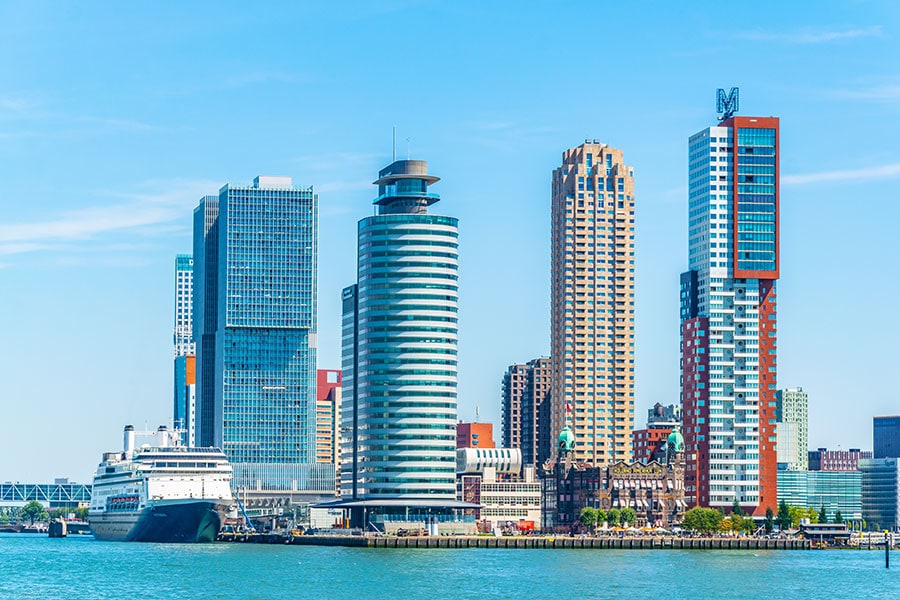The business climate refers to the conditions and factors that businesses encounter in the development and growth of their activities when establishing or residing in the Netherlands.
Within each category, there are positive developments and points of concern
The heatmap divides the sixty indicators into six categories: 1) Human Capital, 2) Infrastructure and Physical Space, 3) Macroeconomics, 4) Physical Safety and Security, 5) Politics, Regulation, Institutions and Society, and 6) Trade, Investments and Market Opportunities. Within these categories, the differences can be significant.
An example is Infrastructure and Physical Space, the only category that is coloured green in 2023 compared to 2018. This is partly due to the reduction in greenhouse gas emissions per capita. However, within this category, there are also negative developments, such as rising house prices. Barbara Baarsma, chief economist of PwC Netherlands, stresses that the heatmap does not take legal limits into account. 'You don't read in the heatmap whether, for example, greenhouse gas and nitrogen emissions have decreased enough to meet climate and nature targets. The reader has to take that into account when interpreting the heatmap.'
In the Human Capital category, we also see overall improvements, although they are not significant enough to colour this category green. There we see, alongside favourable developments in education and innovation, several points of concern, such as ageing, labour shortages, and wage development.
The complete heatmap and the heatmap per category can be found in the publication 'Business Climate Heatmap: Measuring Dutch Business Climate Trends'.

A broader and more nuanced perspective on the business climate
'The value of the heatmap lies in the broad perspective on the business climate,' says Barbara Baarsma. 'We all know the rankings in which the Netherlands generally scores well. But these are based on a limited number of indicators and often focus on the international dimension of the business climate. Our heatmap shows much more precisely where things are going well and where there is room for improvement.'
Baarsma emphasises that the heatmap facilitates a nuanced discussion about the business climate. 'It shows that it is not one factor, but a combination of factors that determine the business climate. The government has expressed the ambition to remain in the top five of the rankings. This heatmap makes clear where the opportunities for improvement lie. It provides companies, politicians, and policymakers with a tool to monitor the progress of business climate policy.'
Agnes Koops, chair of the board of management of PwC Netherlands: 'We experience in client conversations that the business climate in the Netherlands has been under pressure in recent years, for a variety of reasons. We also see this reflected in the societal debate on this subject. We believe it is important to contribute to this debate by sharing facts and figures, and thus building bridges between government and business. The heatmap is a good example of this, a monitoring instrument that enables us all to continuously monitor the state of our business climate.'
The Business Climate Heatmap in an international perspective
PwC has made a comparison, along the lines of the same sixty indicators, with seven other European countries that are culturally and economically similar to the Netherlands and with which the Netherlands competes as a location for international businesses. This comparison shows that the Netherlands has consistently performed better than Belgium, the United Kingdom, France and Germany. However, since 2013, the Netherlands has been losing ground to Denmark and Switzerland.
Barbara Baarsma: 'It is not yet alarming, but even compared to other countries, you see that since 2018, the business climate has deteriorated. Moreover, the Netherlands continues to fare well against countries facing even bigger problems, such as the UK's Brexit or Germany's dependence on Russian gas. In that sense, the relative position of the Dutch business climate is helped by larger problems elsewhere.'
A good business climate is necessary for future investments
Barbara Baarsma: 'It's about the environment in which companies, within the limits of the Earth, can invest, innovate, and grow. A good business climate leads to more growth. Growth is not a goal on its own but a way to continue to make investments in the longer term, for example in infrastructure and sustainability, and to pay the rising costs of an ageing society.'
Curious about the full Business Climate Heatmap?
























